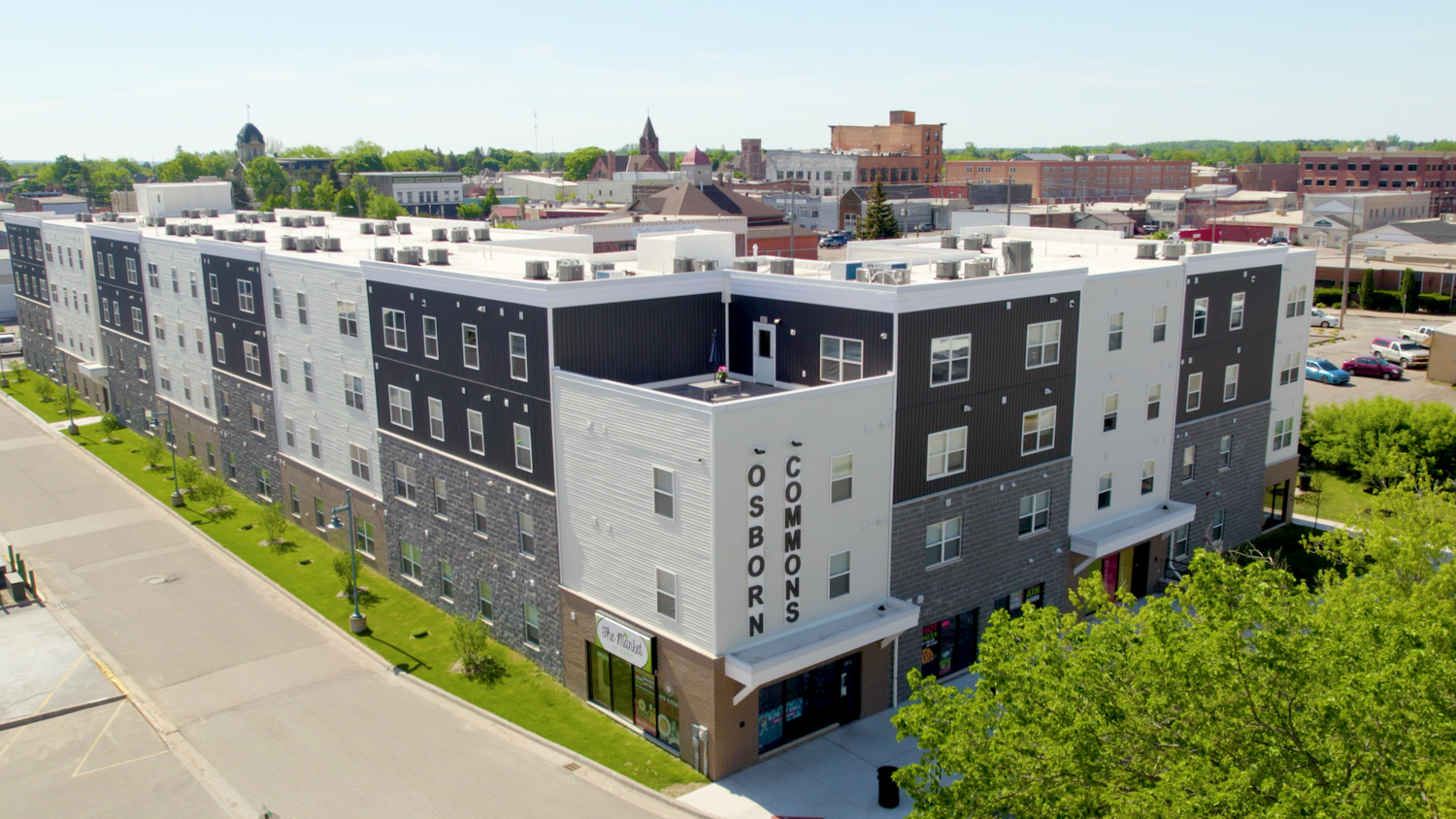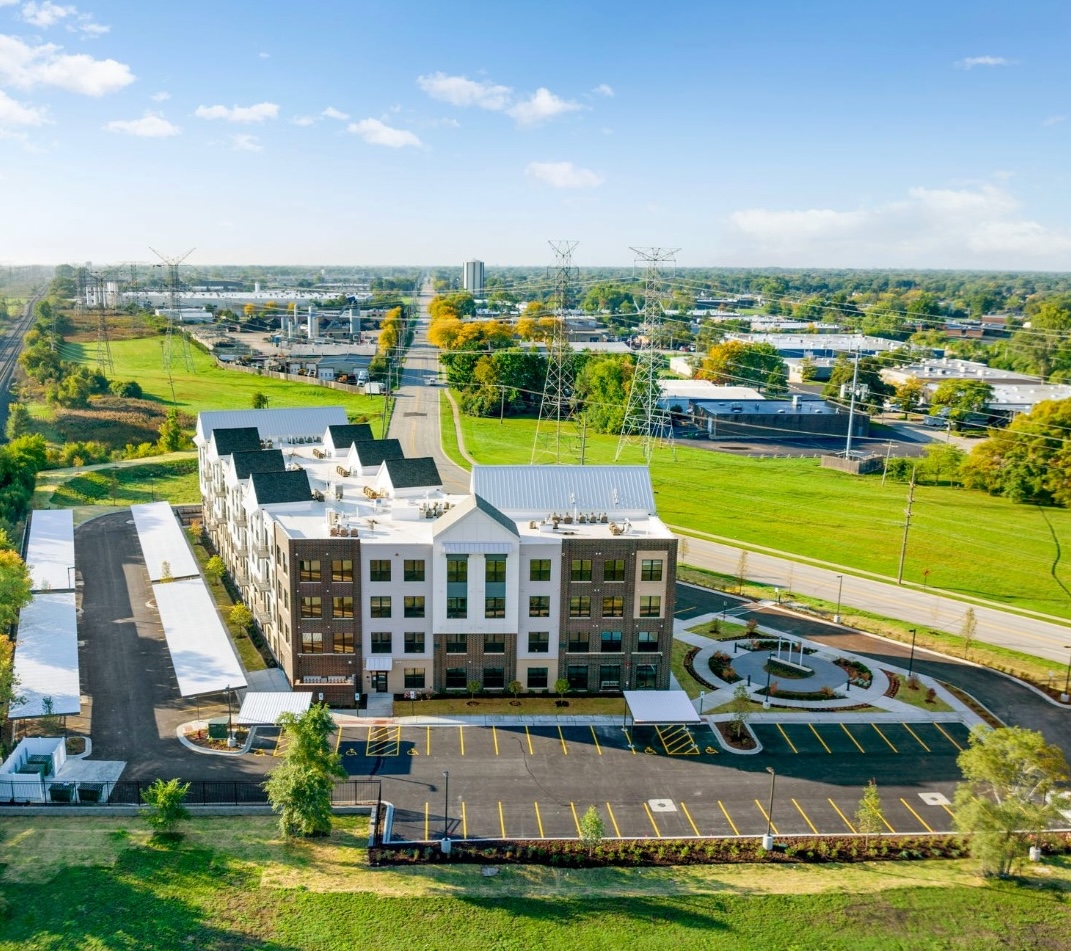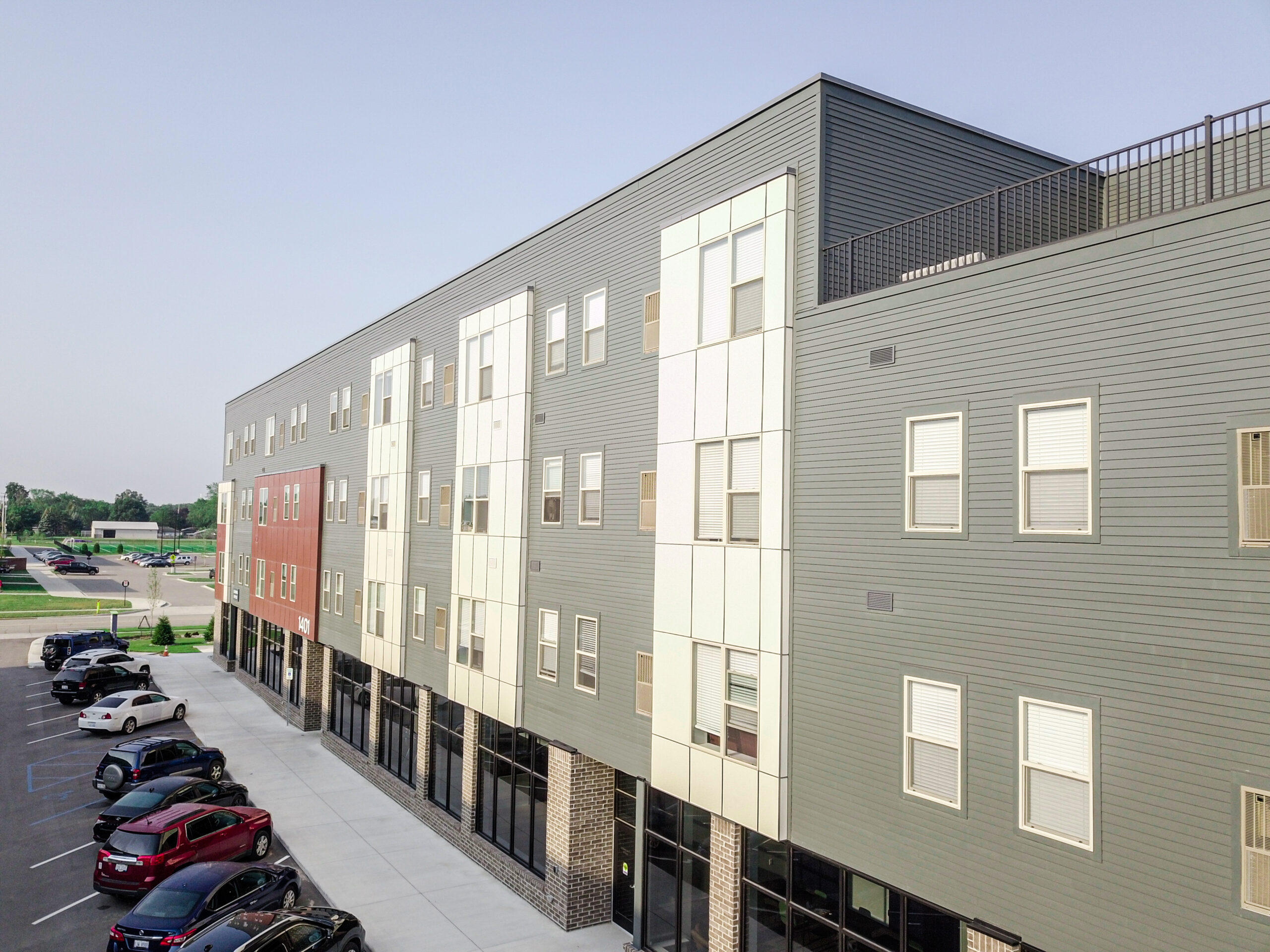Osborn Commons in Sault St. Marie, Michigan, an HDJ-designed affordable housing community developed by Woda Cooper Companies, has won several coveted awards.
Osborn Commons received an Affordable Housing Finance reader’s choice award for best rural development at AHF Live and also named a top winner in the USGBC Detroit Region Leadership Council Awards. The affordable housing building was also recognized as Michigan’s Green Building of the Year: Homes.
The property is a 65-unit mixed income community with 63 of the units rent-restricted affordable units, which are in high demand in downtown Sault St. Marie. Osborn Commons is also the first LEED Gold certified building in the city.
Amenities include an on-site grocery store and market on the ground level, fitness center, and community space. Because of the new grocery story and market, the downtown neighborhood where Osborn Commons sits is no longer considered a food desert. Osborn Commons is a prime example of the positive impact affordable housing and community development can have on a neighborhood and city.
HDJ is a leading national design firm providing architectural and engineering expertise to support the affordable housing industry throughout the United States. HDJ’s diverse portfolio includes successful outcomes with adaptive reuse renovation, acquisition rehab, new construction, historic preservation and RAD.
Author: Josh Hahn




